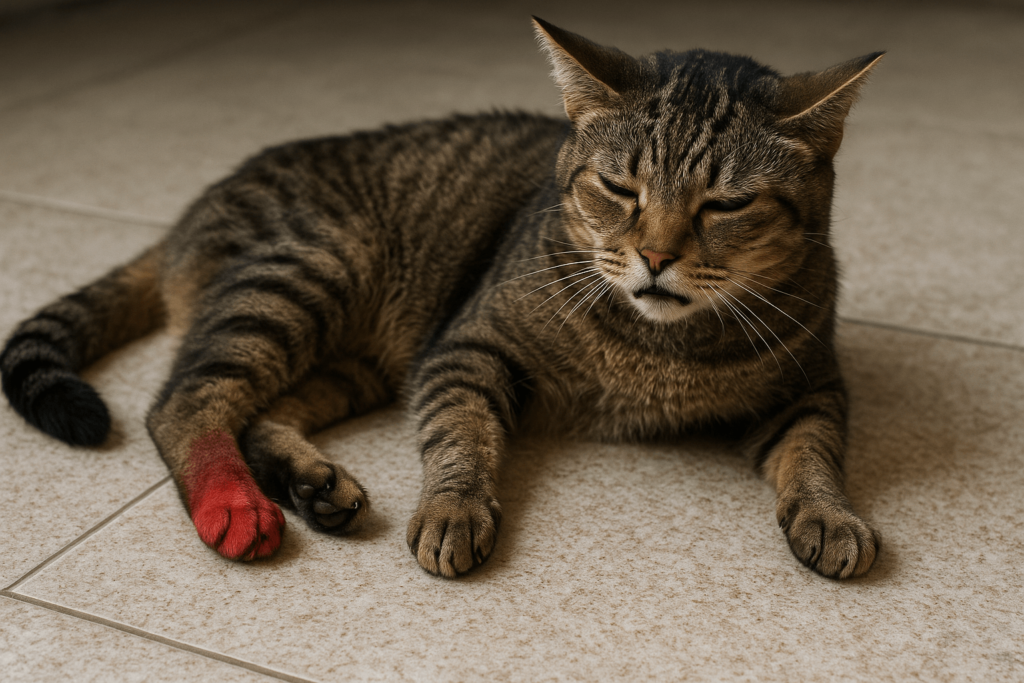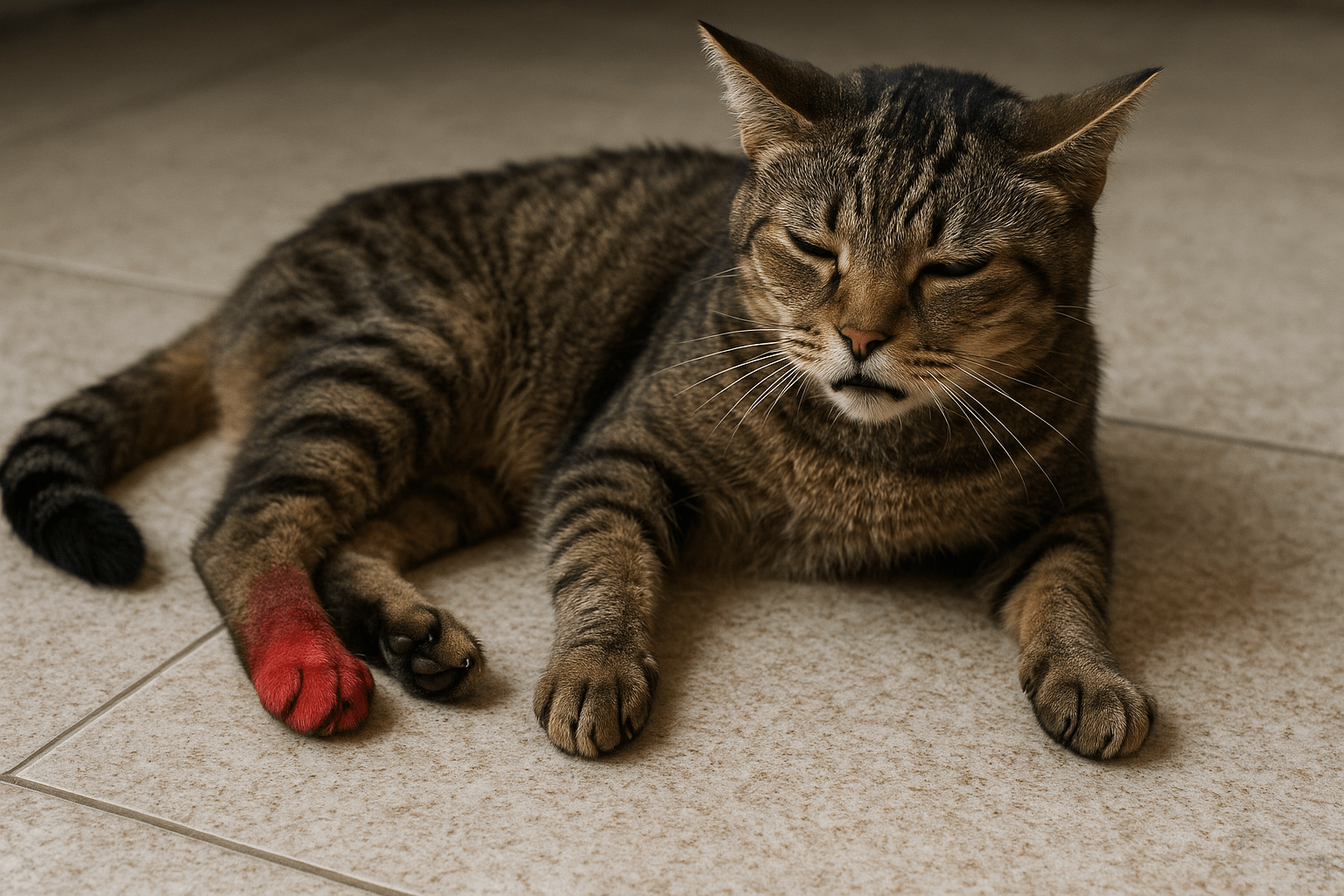Saddle Thrombus in Cats: Recognizing the Symptoms and Acting Quickly
A saddle thrombus, also known as a feline aortic thromboembolism (FATE), is a life-threatening condition that occurs when a blood clot lodges in the arteries supplying blood to a cat’s hind legs. This sudden blockage can cause severe pain, paralysis, and distress, making it critical for cat owners to recognize the symptoms early. While this condition is often linked to underlying heart disease, its rapid onset leaves little room for delay in seeking veterinary care. Understanding the warning signs, treatment options, and preventive measures can make all the difference in ensuring your cat receives timely help. Let’s delve into what every cat owner needs to know about saddle thrombus and how to respond effectively.
Common Symptoms of Saddle Thrombus in Cats
Recognizing the symptoms of a saddle thrombus is crucial for prompt intervention. These signs often appear suddenly and require immediate attention to prevent further complications.
Paralysis or Weakness in Hind Legs:
One of the most noticeable symptoms is the inability to move or bear weight on the hind legs due to reduced blood flow.Cold Rear Limbs:
The affected limbs may feel cooler to the touch compared to the rest of the body because of restricted circulation.Painful Vocalizations:
Cats may cry out or vocalize excessively due to the intense pain caused by the lack of blood flow and nerve damage.Difficulty Walking or Stumbling:
Some cats may drag their hind legs or appear unsteady when attempting to walk.Blue or Pale Paw Pads:
Discoloration of the paw pads indicates poor oxygenation, a direct result of the blocked blood flow.
These symptoms are alarming and should never be ignored. Early recognition can significantly improve your cat’s chances of survival.

Underlying Causes of Saddle Thrombus
Understanding the root causes of a saddle thrombus can help cat owners take preventive measures and manage risk factors more effectively.
Heart Disease (Hypertrophic Cardiomyopathy):
The majority of saddle thrombus cases stem from underlying heart conditions, particularly hypertrophic cardiomyopathy (HCM), which increases the risk of clot formation.Blood Clot Formation:
Blood clots can develop in the heart and travel through the bloodstream, eventually lodging in the arteries supplying the hind legs.Genetic Predisposition:
Certain breeds, such as Maine Coons and Ragdolls, are more prone to heart disease, increasing their susceptibility to saddle thrombus.High Blood Pressure:
Hypertension can exacerbate heart issues, raising the likelihood of clot formation and subsequent blockages.Lifestyle Factors:
Obesity, stress, and a sedentary lifestyle may contribute indirectly to cardiovascular problems that predispose cats to saddle thrombus.
Identifying and addressing these underlying causes can play a vital role in reducing the risk of saddle thrombus in vulnerable cats.
Check this guide 👉Cat Liver Disease Symptoms: Best 7 Expert Tips!
Check this guide 👉Understanding Autoimmune Disease in Cats: Best 7 Tips!
Check this guide 👉Inflammatory Bowel Disease in Cats: Best 7 Tips!
Symptoms of Saddle Thrombus | Immediate Actions to Take |
|---|---|
Paralysis or weakness in hind legs | Rush your cat to an emergency vet clinic |
Cold rear limbs | Keep your cat calm and avoid handling |
Painful vocalizations | Provide a warm, quiet space until help arrives |
Difficulty walking or stumbling | Avoid forcing movement to prevent injury |
Blue or pale paw pads | Monitor breathing and pulse while waiting for care |
Treatment Options for Saddle Thrombus
While saddle thrombus is a serious condition, there are treatment options available to alleviate symptoms and address the underlying cause. Early intervention is critical for improving outcomes.
Pain Management:
Veterinarians often administer painkillers to relieve the intense discomfort associated with saddle thrombus.Anticoagulant Therapy:
Medications like heparin or aspirin may be prescribed to dissolve existing clots and prevent new ones from forming.Oxygen Therapy:
Supplemental oxygen can help improve oxygenation in areas affected by poor circulation.Management of Underlying Heart Disease:
Treating the primary heart condition, such as HCM, is essential to reduce the risk of future clot formation.Supportive Care:
Intravenous fluids, physical therapy, and other supportive measures can aid recovery and enhance quality of life.
While not all cases have a favorable prognosis, timely and comprehensive treatment can make a significant difference.
Preventive Measures to Reduce the Risk of Saddle Thrombus
Preventing saddle thrombus involves managing risk factors and maintaining your cat’s overall health. Proactive care can help minimize the likelihood of this devastating condition.
Regular Veterinary Check-Ups:
Routine exams allow vets to detect early signs of heart disease or other potential risks before they escalate.Heart Health Monitoring:
If your cat has been diagnosed with heart disease, follow your vet’s recommendations for monitoring and treatment.Maintaining a Healthy Weight:
Feeding a balanced diet and encouraging exercise can reduce strain on the cardiovascular system.Stress Reduction:
Minimizing stress through environmental enrichment and a calm home environment supports overall well-being.Medications When Necessary:
In some cases, preventive medications may be recommended to lower the risk of clot formation.
Taking these steps can help safeguard your cat’s health and potentially prevent the onset of saddle thrombus.
Emotional and Financial Impact of Saddle Thrombus
Dealing with a saddle thrombus diagnosis can be emotionally and financially challenging for cat owners. Understanding the impact can help you prepare for the road ahead.
Emotional Toll on Owners:
Watching your cat suffer can be heartbreaking, especially given the sudden nature of the condition.Cost of Emergency Care:
Emergency treatments, hospitalization, and ongoing medications can be expensive, requiring financial planning.Long-Term Commitment:
Managing underlying heart disease often involves lifelong care and regular vet visits.Quality of Life Considerations:
Decisions about treatment must balance medical needs with your cat’s comfort and happiness.Support Networks:
Connecting with online communities or support groups can provide emotional guidance during difficult times.
By acknowledging these challenges, you can better navigate the complexities of caring for a cat with saddle thrombus.
Home Care Tips After a Saddle Thrombus Episode
After a saddle thrombus episode, providing proper home care is essential for your cat’s recovery and well-being. These tips can help you create a supportive environment.
Create a Calm Space:
Set up a quiet, comfortable area where your cat can rest without disturbances.Monitor Progress Daily:
Keep track of improvements or setbacks in mobility, pain levels, and overall demeanor.Assist with Hygiene Needs:
Help your cat stay clean, especially if they struggle with grooming due to limited mobility.Encourage Gentle Movement:
Gradual, supervised exercises can aid in regaining strength and flexibility over time.Administer Medications as Directed:
Follow your vet’s instructions carefully to ensure your cat receives the full benefits of prescribed treatments.
With consistent care, your cat can recover more comfortably and regain some independence.
Signs Your Cat May Be at Risk for Saddle Thrombus
Certain indicators can signal that your cat is at higher risk for developing a saddle thrombus. Being aware of these signs allows for earlier intervention.
History of Heart Disease:
Cats diagnosed with conditions like hypertrophic cardiomyopathy are at increased risk.Rapid Breathing or Panting:
These symptoms may indicate underlying cardiovascular issues that could lead to clot formation.Lethargy or Reduced Activity Levels:
A noticeable decline in energy could point to circulatory or heart problems.Episodes of Collapse:
Sudden fainting or collapsing episodes warrant immediate veterinary evaluation.Abnormal Heart Sounds:
Murmurs or irregular heartbeats detected during routine exams should not be ignored.
By staying vigilant and addressing these warning signs promptly, you can reduce the likelihood of a saddle thrombus episode.
Frequently Asked Questions About Saddle Thrombus in Cats
What is a saddle thrombus?
A saddle thrombus is a blood clot that blocks the arteries supplying blood to a cat’s hind legs, causing pain and paralysis.
Is saddle thrombus treatable?
While treatment can alleviate symptoms and address underlying causes, the prognosis varies depending on the severity and timing of intervention.
How quickly does saddle thrombus occur?
Symptoms typically appear suddenly, often within minutes to hours, making immediate veterinary care essential.
Can saddle thrombus recur?
Yes, cats with underlying heart disease are at risk of experiencing another episode unless managed carefully.
What breeds are most at risk?
Breeds like Maine Coons and Ragdolls are genetically predisposed to heart conditions that increase the risk of saddle thrombus.
Acting Swiftly Can Save Your Cat’s Life
Saddle thrombus is a devastating condition that requires immediate attention to give your cat the best chance of recovery. By recognizing the symptoms, understanding the causes, and taking preventive measures, you can play a proactive role in protecting your feline companion. Remember, time is of the essence—quick action and professional veterinary care are crucial in managing this life-threatening issue. With knowledge and dedication, you can ensure your cat leads a happy, healthy life, even in the face of potential risks.
Canned Pumpkin for Cat Diarrhea: Best 7 Expert Tips! Natural remedy to firm stools, soothe upset bellies, and support gut health safely.
Can a Cat Give You Scabies? Best 7 Expert Tips! Discover the truth about feline mites, human skin risks, and how to protect yourself—without panic.
Cat Flea vs Human Flea: Best 7 Expert Tips! Discover the truth about bites, species, and how to eliminate infestations for good.
Weird Cat Behaviors: Best 7 Expert Tips! Discover why cats do strange things—and how to understand, not punish, their instincts for a happier home.





